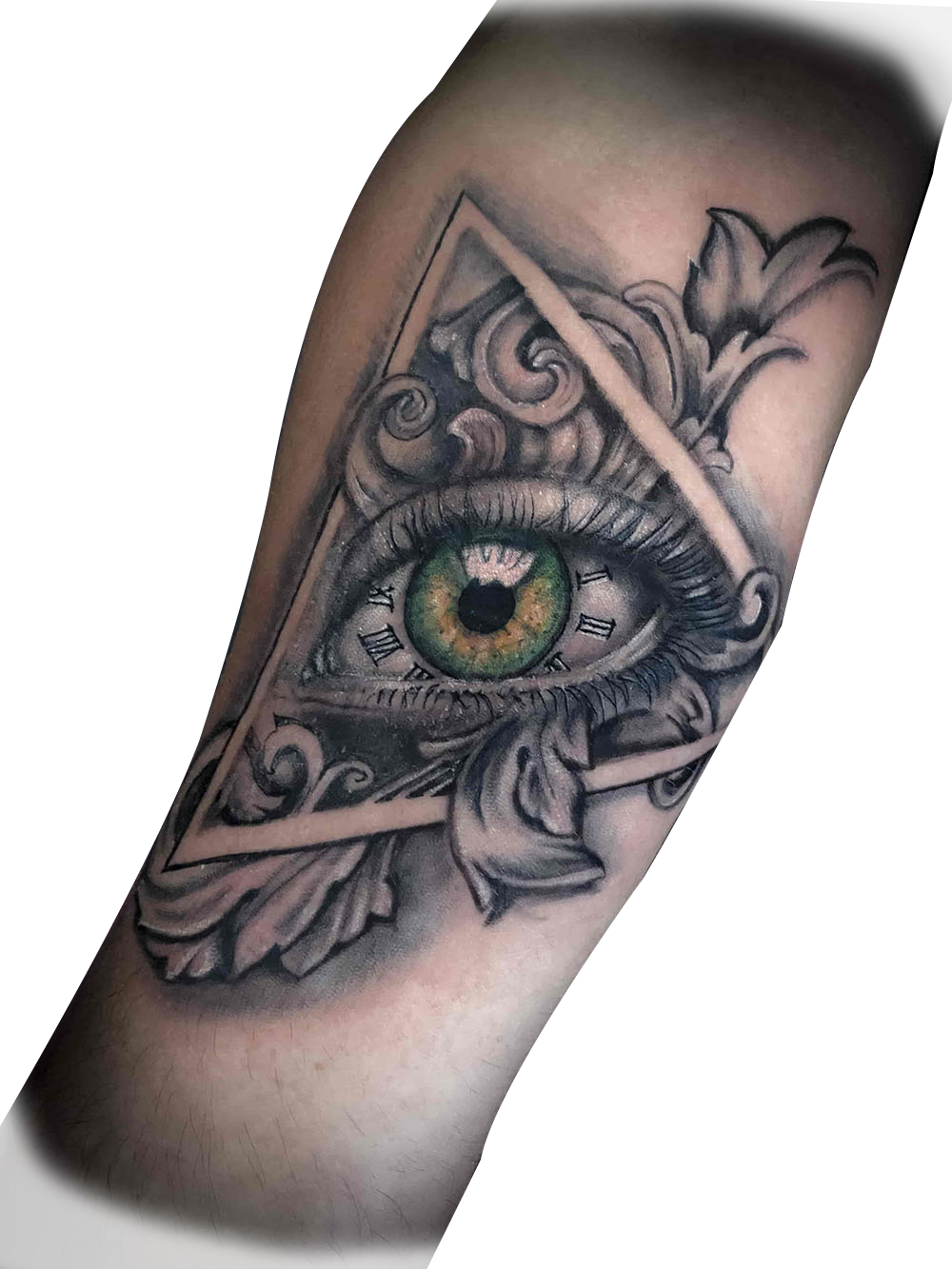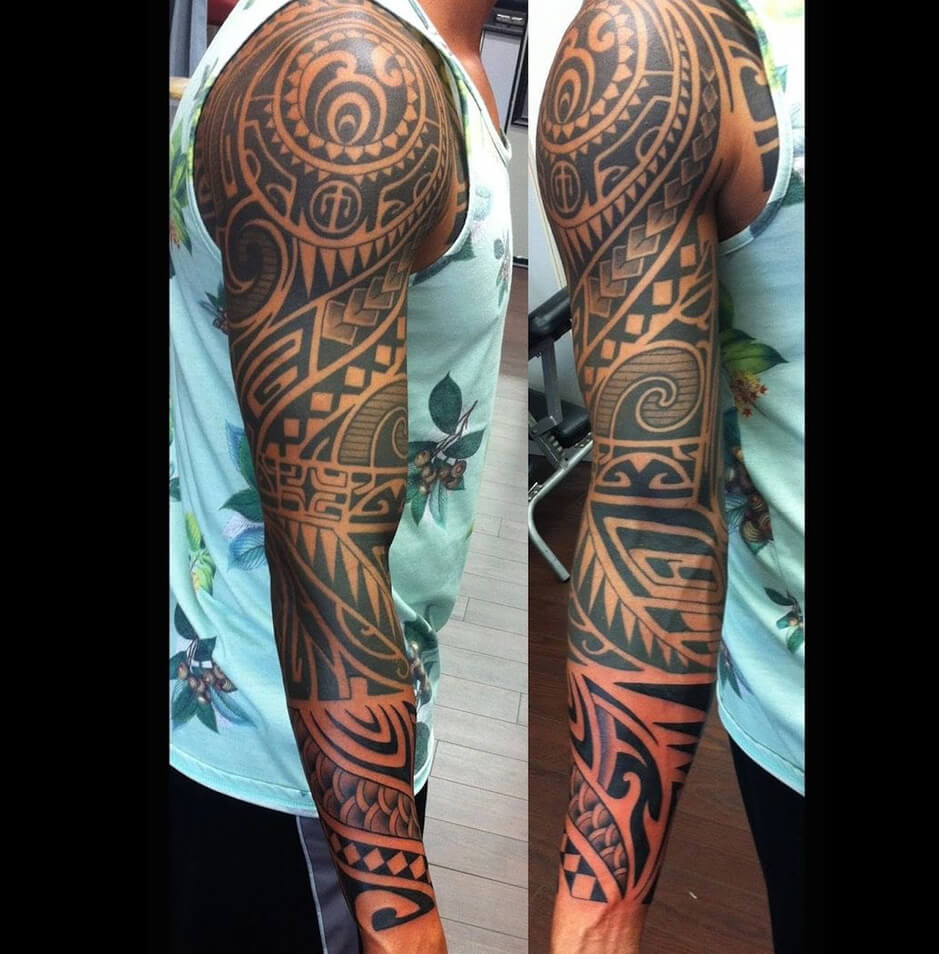
TRIBAL (aka Polynesian)
Tribal tattoos draw inspiration from indigenous communities who used
tattoos to tell a narrative story, as part of a sacred ritual, or both. This
category includes many specific sources, including native communities
in Hawaii, Samoa, and New Zealand, often referred to collectively as
Polynesian. There are some common threads among tattoos in this
group, namely, thick, black lines and bold, elaborate patterns. Many
modern tattoos may borrow this aesthetic, but lack the cultural
associations.
JAPANESE (aka Irezumi)
Traditionally Japanese tattooing is characterised by a boldness and
readability that leaves no ambiguity as to what is depicted in the tattoo.
This is achieved through high contrast, strong line work, and a
background that compliments and contrast the foreground. There is also
a focus on dynamic positions and shapes that convey a sense of
movement both in the portrayal of the subject as an illustration, as well
as in the overall tattoo as it is positioned on the body.
What this foreground subject is can range from any of the classics, such
as:
- koi carp
- dragons (or Ryuu in Japanese)
- warriors
- tigers
- shi shi or foo dogs
- oni (malevolent demons)
- masks from Japanese noh theatre (most popular is Hannya)
- phoenix (or Hoho)
- the fox (or kitsune)
- tengu (bird headed supernatural beings)
- kappa (river spirits)
- various monsters or yokai
- ghosts (or yurei)
- various specific Buddhist and Shinto deities
- various flowers: cherry blossoms (or sakura), maple leaves (or momoji),
- peony flowers (or botan), chrysanthemum flowers (orkiku)
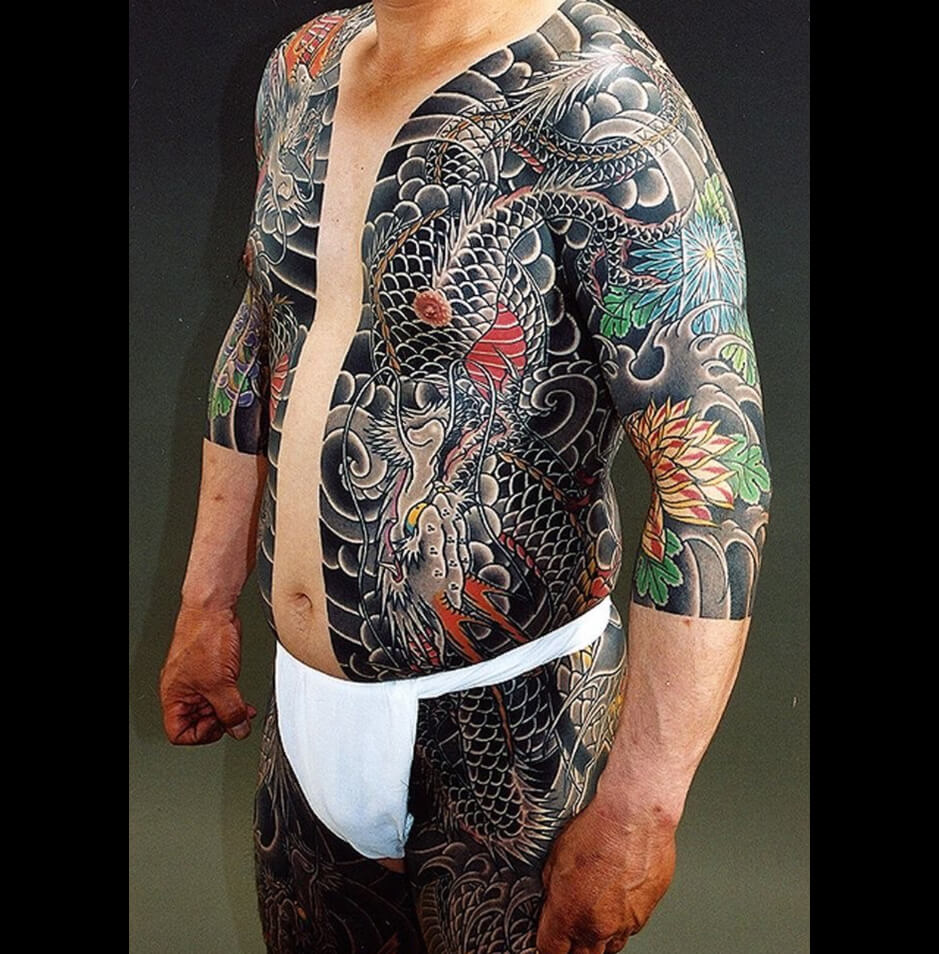
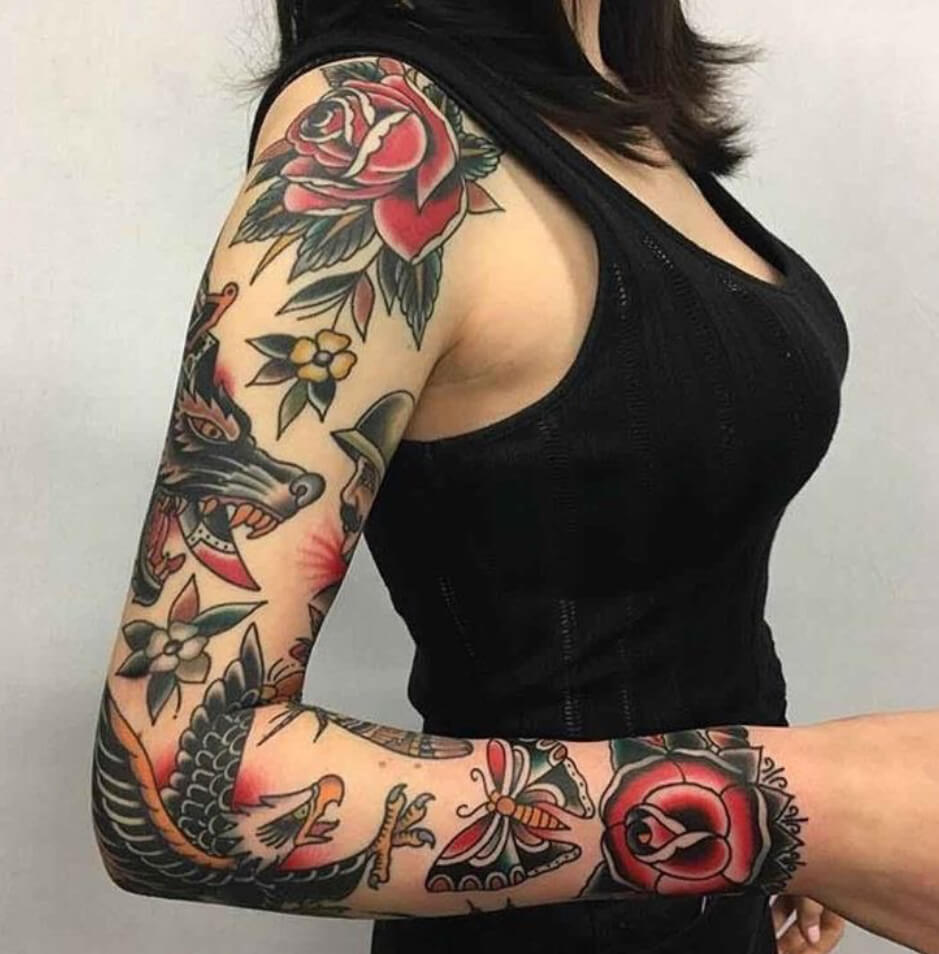
AMERICAN TRADITIONAL
Tattoos in this style originated from 18th century European sailors
inspired by the indigenous communities they encountered on
expeditions, and were applied to document mementos from their
voyages. Notably, British explorer James Cook and his men enlisted
tattoos to help them document their journeys to Japan, China, and
Hawaii.
Tattoos in this category feature bold, clean outlines, and usually stick to
only primary colors. They are purposefully two-dimensional. By the
19th century, tattoos in this style became more colorful and refined.
Common images include skulls, roses, daggers, eagles, hearts, and
nautical images.
WATERCOLOR
Currently having “a moment,” tattoos in this style aim to bring watercolor paintings to your skin. Achieving this is very difficult with atattoo needle or gun, but when done well, watercolor tattoos look like you’ve got actual brush strokes on your body. Outlines go out the window in favor of smoothly blended colors, so they’re perfect for anybody who’s known to color outside the lines.
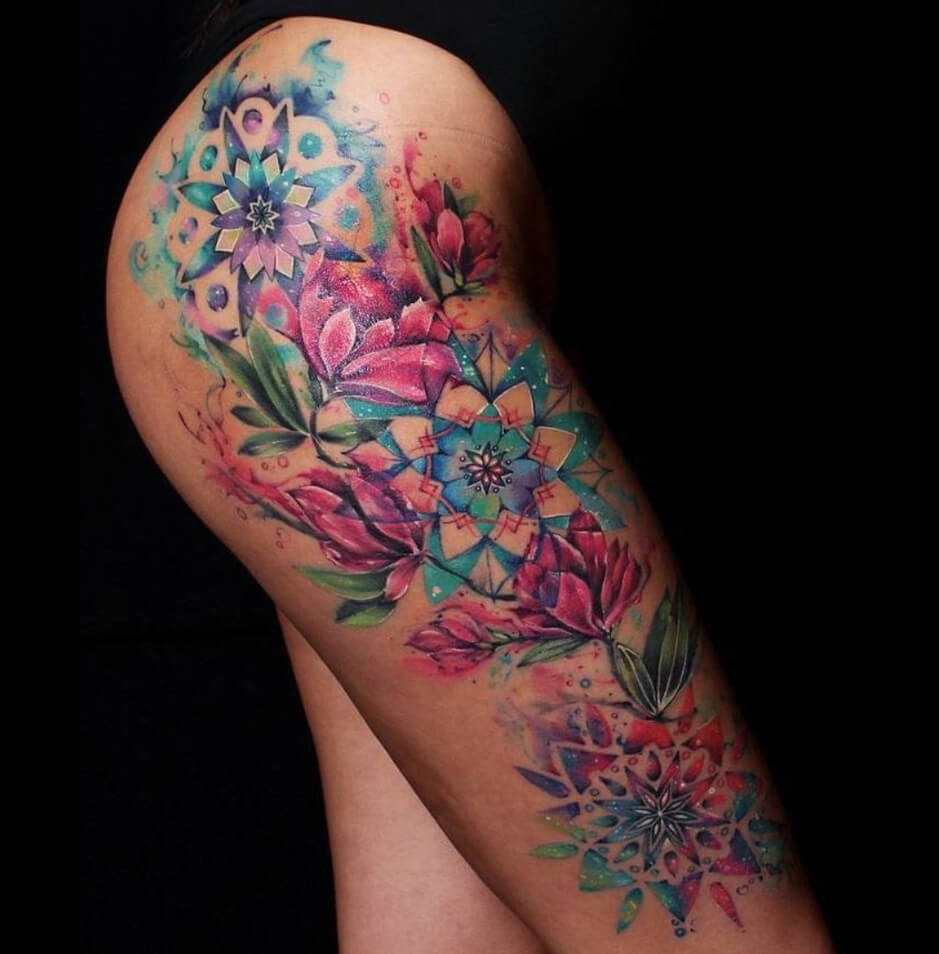
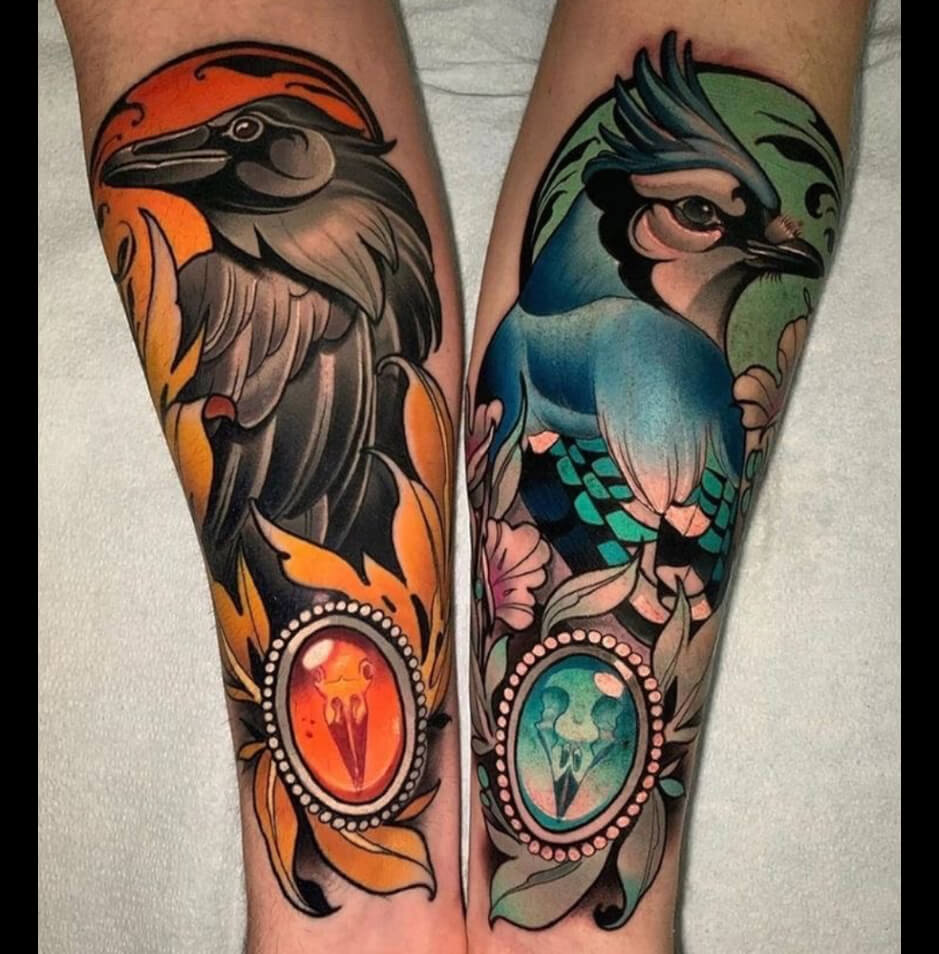
NEO TRADITIONAL
Neo traditional, as the name implies, is an evolution of the traditional style. It features the core properties of its predecessor, like pronounced linework and extremely vibrant colors but it also has an illustrative quality to it. This is because Neo traditional artists are highly influenced by Art Nouveau and Art Deco aesthetics. The main difference between traditional tattoos and neo traditional tattoos is that neo traditional tattoos often have a broader color palette and a broader range of motifs. Pieces done in this style are known for their lush, decorative details as well as the use of natural imagery such as florals and animals.
BLACKWORK
Stylistically speaking, blackwork is a very broad categorical term. It applies to almost any body art that’s created using solely black ink, but as you can imagine, a lot can be done with this versatile and striking color. Looking through blackwork artists’ portfolios, you’ll see all kinds of tattoo types from ancient sacred geometry to modern abstract ornamental designs to extremely detailed illustrative pieces. It is hands down the style where the most experimentation is currently occurring in the industry, and some of the work being produced today is absolutely mind-blowing.
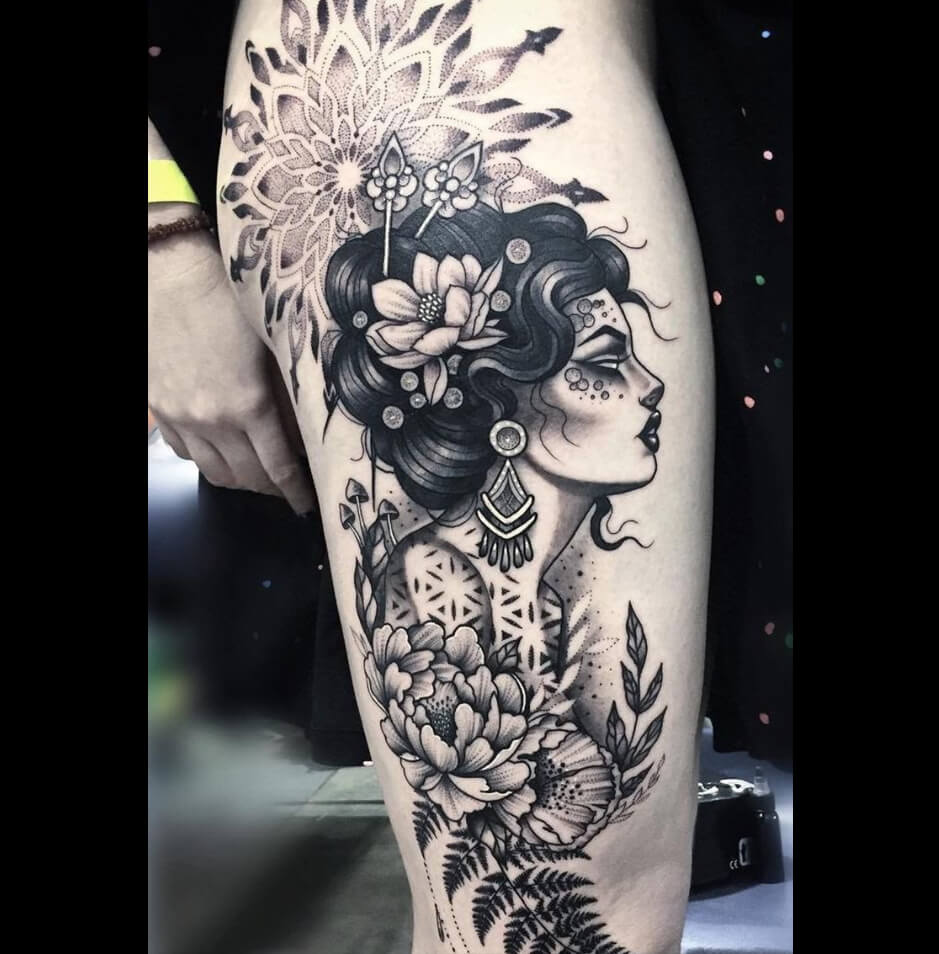
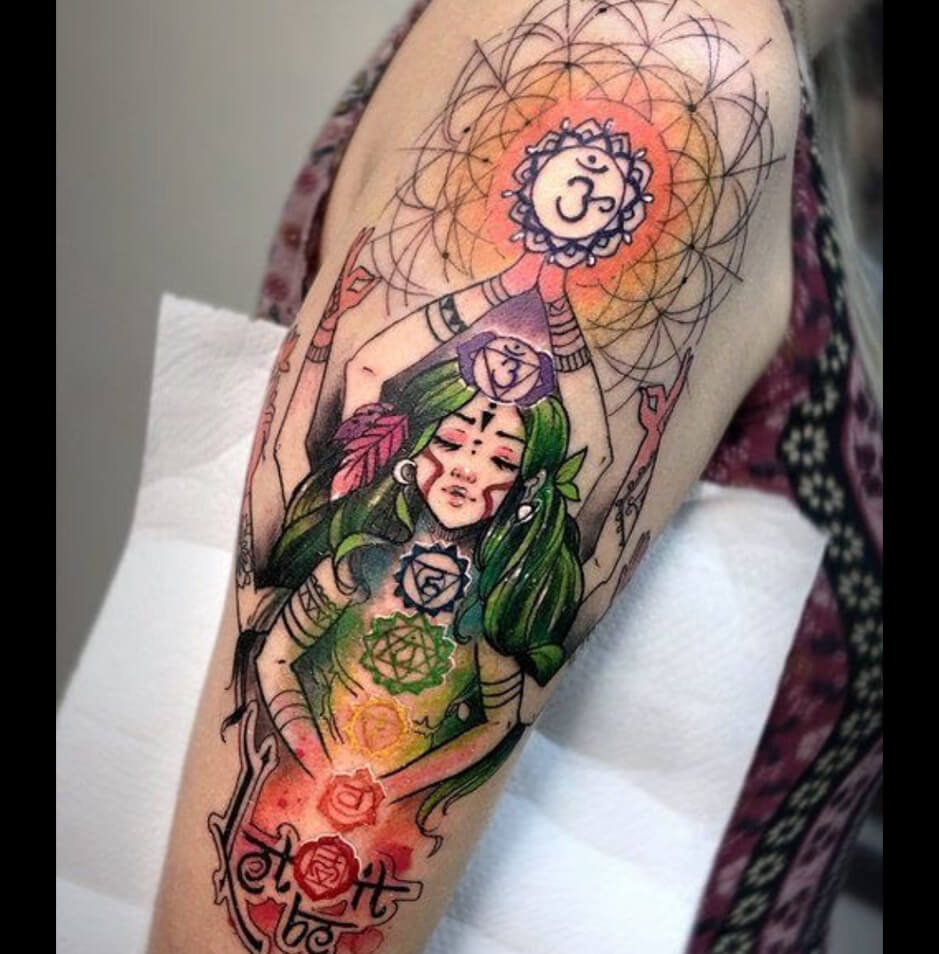
ILLUSTRATIVE
A large variety of work can be called Illustrative, and that is because there are so many techniques and art movements that inspired it! Frometching and engraving, to abstract expressionism, and even fine line calligraphy, this tattoo style is extremely versatile. Many artists who work in this style will blend their own aesthetic with it to create a whole new style of their own…but as long as their tattoos look like they could belong on a piece of paper or a canvas hanging up in a gallery, you know it’s Illustrative!
NEW SCHOOL
New school tattoos are some of the most easily recognizable tattoos of today.
Known for an experimental design style, new school tattoos are centered around the use of vivid color schemes, bold line-work, and zany subject matter. New school tattoos are known for pushing the boundaries and encapsulating otherwise ordinary subjects in bright color.
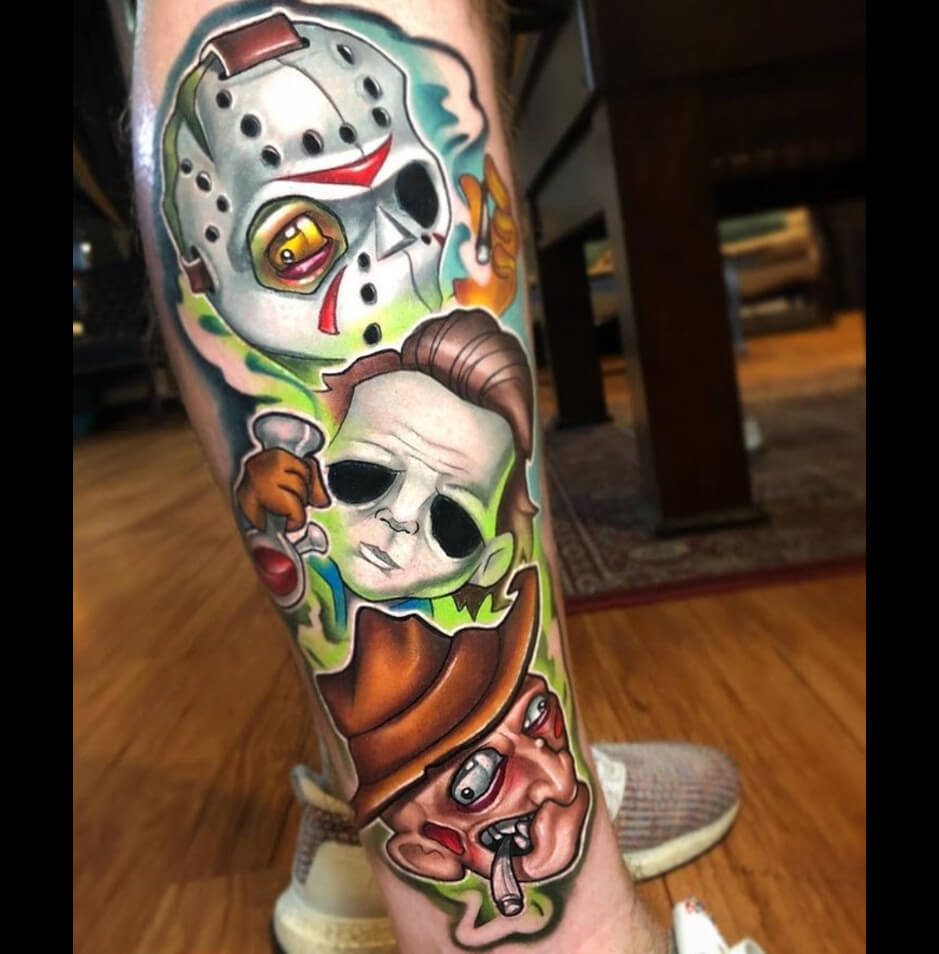

CHICANO
The Chicano style has so much cultural influence that it has gone on to influence other styles as well. Steeped in the history of things such as the Mexican Revolution, Los Angeles low-riders and Pachuco culture. Born behind bars, the aesthetic evolved from artists in prison who used what few materials they had to beautifully capture what they loved and missed on the outside. Usually fine line, black and grey, and wrapped up in the Chicano culture, this genre of tattooing is absolutely enthralling.
SHONEN / ANIME
Anime is an incredibly popular cartoon genre all over the world, and some hardcore fans choose to show off their love through body art. This style combines techniques and composition from New School, Illustrative, and Japanese style tattooing with the striking images from some of the most famous Manga and Anime characters.
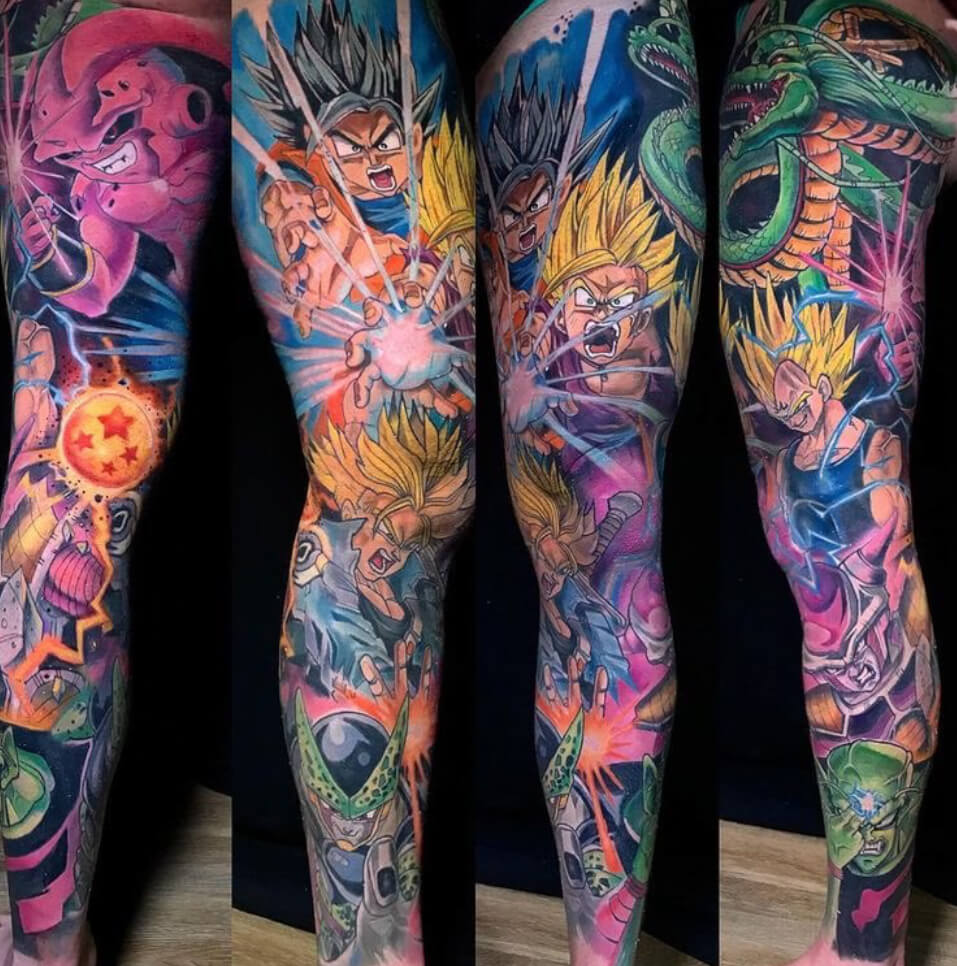
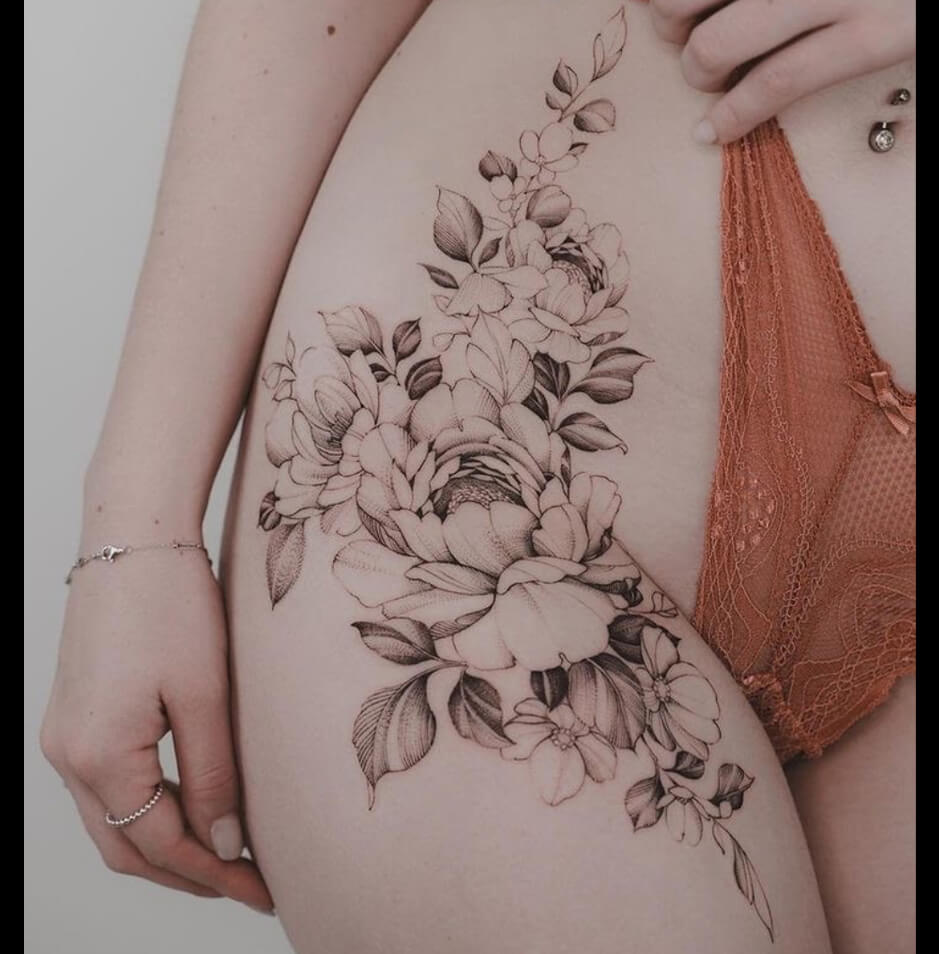
FINE LINE
Fine line tattooing consists of distinct straight or curved thin lines, without gradations in shade or color to represent 2D or 3D objects, emphasizing form and outline over color, shading, and texture. These tattoos can have incredible levels of detail built in, without being ‘loud’ about it.
REALISM
Realism (or photorealism style) tattoos are designs meant to look as
convincing as a photographed image. Realism body art often features
natural landscapes and scenery, animals, and portraits of people done to
almost a photographic likeness.


